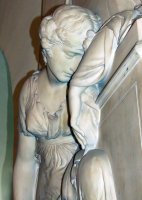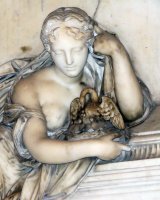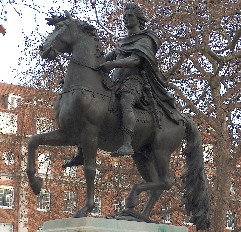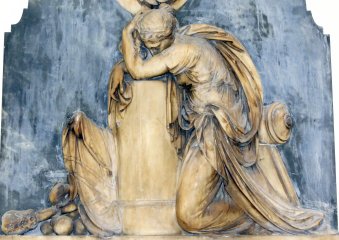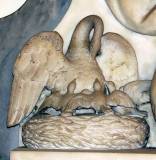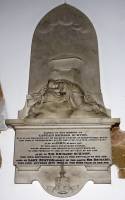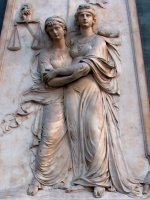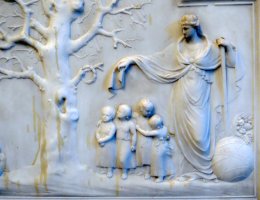John Bacon, Junior (1777-1859)
The sculptor John Bacon Junior was a prolific sculptor of church monuments, often in the mourning-girl-and-marble-pot genre, working mostly in the early decades of the 19th Century. He is one of the best of such monumental sculptors of his time, and his excellent sculptural work can be seen in many English churches and cathedrals.
The sculptor John Bacon Junior, or John Bacon the Younger, received his initial training under his illustrious father, John Bacon RA, before going to the Royal Academy Schools at the age of 12 years old. By his mid teens, he was exhibiting at the Academy himself. On his father's death, he completed his unfinished works, including the well-known William III in St James Square, London.
William III, by John Bacon Sr and John Bacon Jun.
John Bacon Jun. became a prolific and successful sculptor of monuments, working in a partnership with the monumental mason Samuel Manning to produce memorial sculpture. Perhaps he became too successful, as his later work has been criticised for tending to the formulaic, before he more or less retired in about 1830, leaving the work of the partnership mostly to Manning.
At his best, however, John Bacon Jr. is very good indeed, and his large output of monuments for churches and cathedrals means it is easy to become acquainted with his work. His speciality was grieving women and angels, wearing clinging classical drapery over well rounded contours, in that way very reminiscent of the end rather than the beginning of the 19th Century. But the faces of his figures tended to the classical, Junoesque or even matronly rather than youthful, and in the shape around the lower face and chin, make his work recognisably and comfortably fit in their 1800s era. Likewise the poses, which for his tombs often tend to the lounging or casually cross-legged and leaning on elbow rather than something more expressive of heartfelt grief. To discover a Bacon Jr figure in a church is always a pleasure, and always worth a detailed look, not just for the composition, but for his drapery and his details, which are excellent.
Alongside the more ambitious figure pieces, there are a good number of white-on-black panels by John Bacon Jr on a more humble scale and with modest carving - a funereal urn or pot, a coat of arms carved in low relief, some foliage. Monuments signed by both Bacon and Manning tend to these simpler pieces, though there are more highly carved pieces too, for example the low relief caskets on the monument to William Haven, d.1809, in Marylebone Church, and the ambitious figure piece to Charles Grant, d.1823, in St George Bloomsbury Way, to give two London examples.
'Pelican feeding her young', from a monument by Bacon Jun.
As noted, his work is widespread, and many churches and cathedrals hold examples of his monuments. Perhaps my favourite example is that to Lord Henniker in Rochester Cathedral (1806). He has several monuments in St Paul's, and we might also mention the Solly and Ellis monuments in Worcester Cathedral, the Katencamp Memorial in Bath Abbey, and now in the V&A, the Anna Rhodes memorial. A typical monument by Bacon, to George Gostling, with a Classical girl mourning next to a funeral urn, is in Twickenham Church; among many others, a pair of Classical girls can be seen in Epsom Church, and are shown on this page; a classical urn above an architectural trophy is shown on the St Mary Paddington Green page; and a most spirited girl with an Aladdin-style lamp is in St John the Evangelist Church, Stoke-next-Guildford, Surrey. The example below is from St Peter in Thanet, Kent.
Further examples of Bacon Jun monument with relief sculpture.
